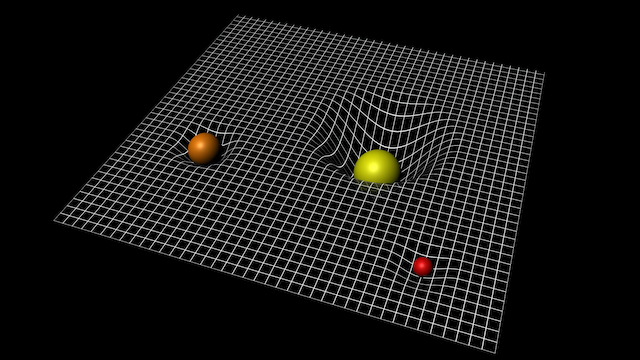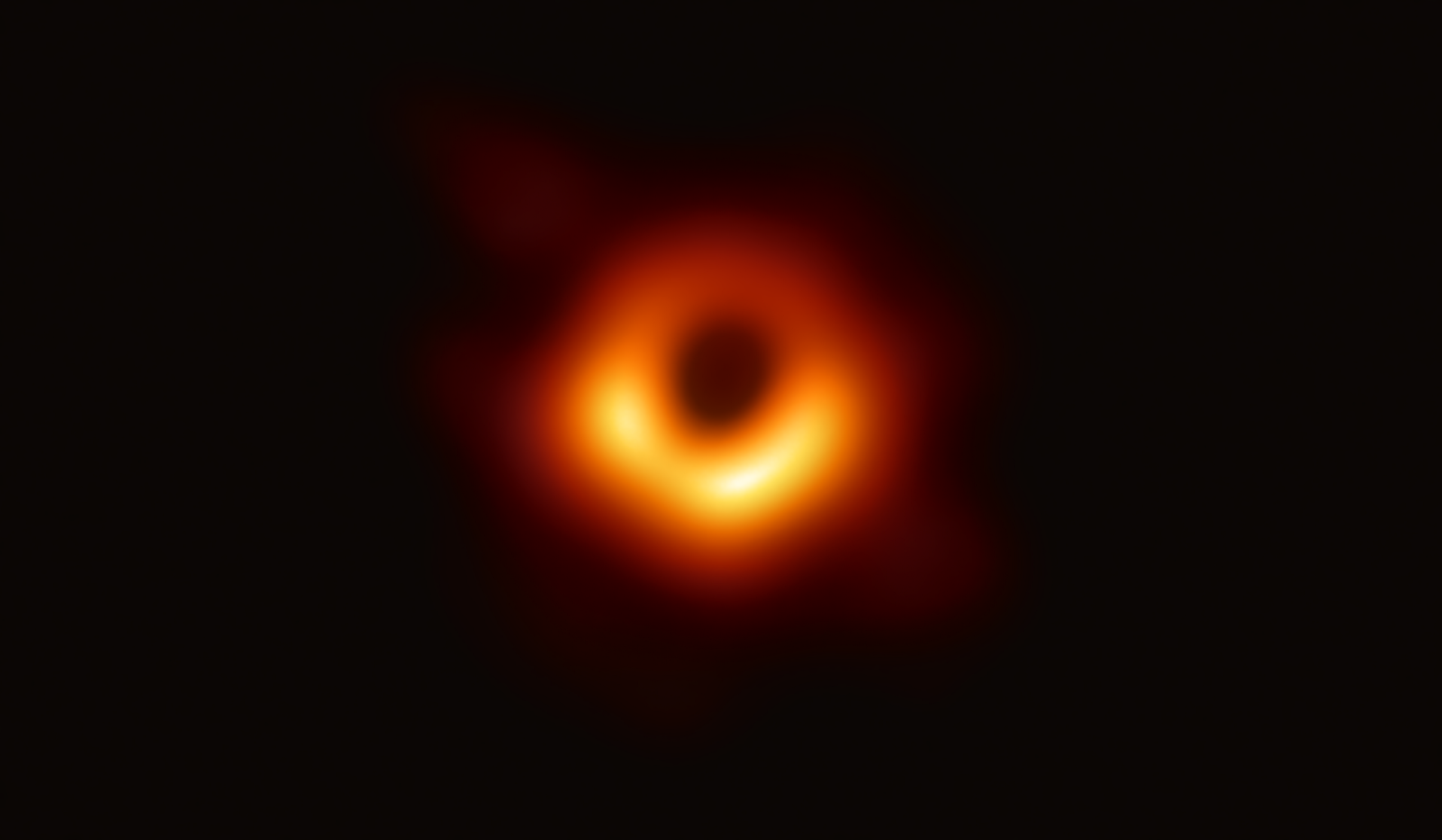How to Travel to the Future
A Non-Technical Guide to General Relativity and Black Holes
Dec 13, 2020
Last week we heard the news all over the internet. Elon Musk's SpaceX conducted a test flight for the Mars starship in south Texas. Although the rocket exploded as it was landing, on Twitter, Elon deemed the test a success. They were able to collect crucial data for a future mission to the red planet. Space travel has always been fascinating, and it seems to me Mars is the next stop for humans.
In his book Reality is Not What it Seems, theoretical physicist Carlo Rovelli describes a way to travel to the future–at least in theory. It involves space travel and a rocket ship. That's just a little passage in the book while he's explaining the physics of black holes. From this came the inspiration for this post. Black holes aren't fully understood yet, but Einstein's theory of general relativity can explain a great deal of their nature.
I'll take the chance to talk about general relativity and black holes in a non-technical way. General relativity involves complex math–such as the Riemann curvature tensors, which describe the curvature of surfaces in higher dimensions. But, as I said, I won't get into the math of general relativity or black holes. Not out of laziness, but because I don't completely understand it. It's safer to sit and watch the sea from the shore. We'll only dip our feet to get a feel of the water.
Albert Einstein's Theory of General Relativity
Albert Einstein published his theory of general relativity in 1915. Ten years after his first theory of special relativity. The new theory was a generalization of special relativity. In other words, general relativity was more comprehensive and universally applicable. Einstein revised the laws of motion discovered by Issac Newton.
The force of gravity–discovered by Newton–attracts objects toward each other. That's why, when we throw a ball in the air, it comes back down and not out into space. However, Newton couldn't explain how physical objects exert this force. Einstein realized that, just as an electromagnetic field carries the electric and magnetic forces, a similar field must also carry the gravitational force. That is the gravitational field.
He understood that the "space" through which objects move is the same as this gravitational field. And, not only that, the gravitational field–just as the electromagnetic field–bends and oscillates like waves in the ocean. It is affected by the mass of objects, bending around them. A bent gravitational field is what makes the planets orbit around the Sun and the moon around the Earth. It was a stunning discovery–one that shed a brighter light on our picture of the world and reality.
The Fabric of Spacetime
We also call the gravitational field spacetime. Why? As I mentioned above, Einstein discovered that space–through which objects move–and the gravitational field are the same thing. He also tells us that space and time can't exist without each other. Now, recall that, by definition, a moving object changes its position in time. In other words, it changes its location in space as time passes. Otherwise, the object isn't moving. It's the same as saying, if no time has passed, then the object hasn't changed its position yet. Therefore, it hasn't moved either. It may seem obvious, but this shows us that space and time are not separate entities. They are part of the same fabric: spacetime.

The curvature of spacetime. Credit: CESA–C.Carreau
So, there we have it. Objects move through the gravitational field–or spacetime. The mass of these objects curves the flexible fabric of spacetime. This effect is more pronounced for larger masses. The curvature of space causes objects to "fall" into others–like a marble falling down a funnel. But, don't forget that time also curves. That means time doesn't pass at the same rate at different points in space. Time is relative.
Time is Not Constant
Think about a ball rolling down a hill. It's easy to imagine that the ball will roll down faster at the parts where it's steep, and slower at the flatter portions of the hill. In other words, the speed of the ball changes depending on the hill's curvature. Well, something similar happens to time in curved spacetime.
We've seen that objects bend spacetime around themselves. A consequence of curved time is that it slows down when we're closer to a mass, and it gets faster as we move away. On Earth, someone living in the mountains will age faster than someone living at sea level–closer to the surface of Earth. Of course, at such small distances, we can't tell the difference. However, it exists. Physicists can measure these discrepancies using precise clocks at the lab. At a large enough distance–for example, between two galaxies–these differences become more apparent.
Experiments have confirmed the predictions of general relativity many times. Things like the bending of light by curved spacetime are confirmed. Most recently, in 2015, gravitational waves–the oscillations of the gravitational field–were detected at the LIGO observatories.
Another prediction of general relativity is the existence of black holes. Physicists observe and study them today. The late Stephen Hawking used quantum mechanics to demonstrate black holes can emit heat. In 2017, the Event Horizon Telescope (EHT) captured the first-ever picture of a black hole.

The first-ever image of a black hole, captured with the Event Horizon Telescope at the center of the galaxy M87. Credit: Event Horizon Telescope Collaboration
More than a hundred years later, science keeps proving that Einstein was right. There are, however, mysteries in the universe we still don't understand.
What is a Black Hole?
A black hole is born when a star dies out. The star runs out of fuel to burn–usually hydrogen–and its mass collapses onto itself. This creates a vast concentration of mass in a relatively small region of space. To give you a sense of the scale, the smallest black hole observed is 3.8 times bigger than our Sun. The biggest one–called quasar TON 618–is at 66 billion solar masses.
According to general relativity, objects with larger masses bend spacetime more and generate a greater gravitational pull. At the scale of black holes, this gravitational pull is so intense that it sucks in everything on its vicinities. Not even light can escape from a black hole. The frontier at which things can't escape the gravity of a black hole is called the horizon. Past the horizon, there's no coming back out.
General relativity also tells us that time runs slower the closer we are to an object's mass. The immense size of black holes causes time to slow down to the point where it stands still. This happens at the black hole's horizon.

Anatomy of a black hole. Credit: Illustration: ESO, ESA/Hubble, M.Kornmesser/N.Bartmann; Labels: NASA/CXC
Going Inside a Black Hole
We still don't know what happens inside a black hole. If we follow general relativity, it tells us that its mass will keep contracting ad infinitum. This is called a singularity. But, it seems implausible–physicists today are trying to understand this. There are a few theories out there, such as string theory and loop quantum gravity or just loop theory.
Carlo Rovelli–whom I mentioned at the beginning–is an Italian theoretical physicist. He is one of the founders of the loop quantum gravity theory. The word quantum refers to quantum theory–the science that explains the behavior of particles at the atomic and sub-atomic levels. Loop quantum gravity tries to explain what happens with gravity and spacetime at such small scales. For example, when a black hole keeps contracting.
Rovelli is also an excellent writer. And, he has published a few books for the general public about physics. The following is from Reality is Not What it Seems.
Time Travel?
There's a passage in Rovelli's book where he suggests a way one could travel to the future. He warns us, however, that while traveling forward in time may be easy, coming back may be infeasible.
I'll re-print the text here.
Seen from the outside, a black hole is like a sphere that can be entered, but out of which nothing can come. A rocket could stay positioned at a fixed distance from this sphere, called the horizon of the black hole. To do so, it needs to keep its engines firing intensely, to resist the gravitational pull of the hole. The powerful gravity of the hole implies that time slows down for this rocket. If the rocket stays one hour near enough to the horizon, and then moves away, it would then find that outside, in the meantime, centuries have passed. The closer the rocket stays to the horizon, the slower–with respect to the outside–time runs for it. Thus traveling to the past is difficult, but traveling to the future is easy: we need only to get close to a black hole with a spaceship, keep within its vicinity for a while, and then move away.
On the horizon itself, time stops: if we get extremely close to it and then move away after a few of our minutes, a million years might have elapsed in the rest of the universe.
The closest black hole is about 1,011 light-years from our solar system. Its location is in the star system HR 6819. Today we don't yet have the technology to travel near a black hole. But, who knows, just as last week we were excited about SpaceX's Mars starship, maybe one of our future generations will be excited about an HR 6819 starship.
